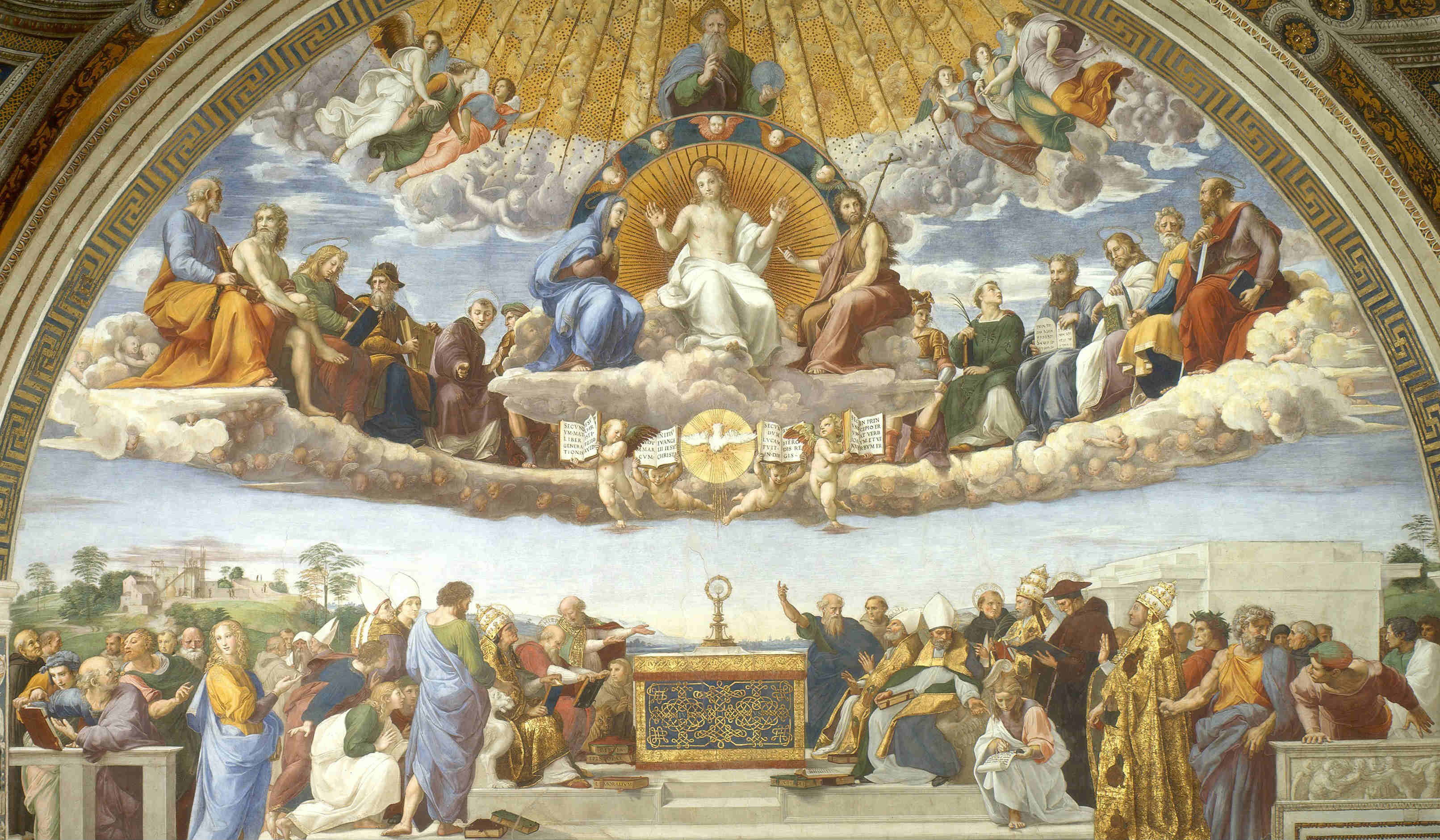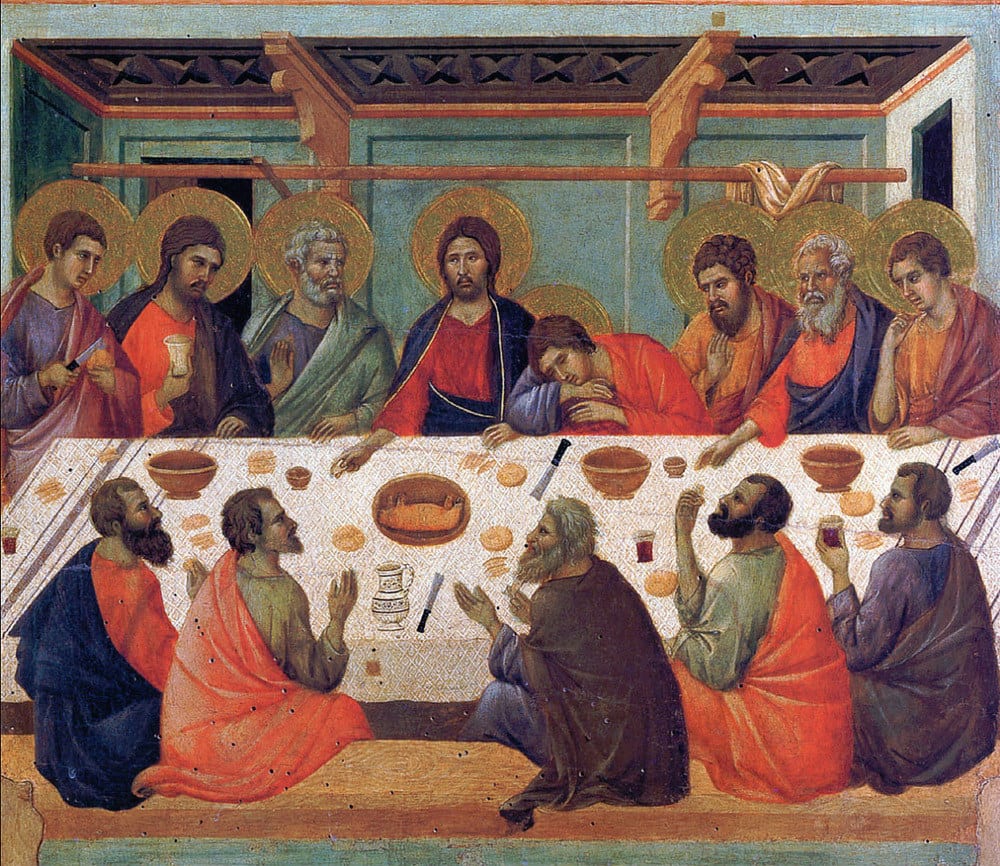Does God Want Everyone to Be Catholic?
Posted by John Martignoni
The truth matters, and we need to respond accordingly. God is counting on us to spread the Word.
I have a question that I quite often ask Catholics, and judging by the responses I get when I ask, the vast majority of Catholics have never before thought about this question, or their answer to it. That question is: Does God want everyone to be Catholic? I am willing to bet, for many of you reading this, that question has never entered your mind. But it needs to, because it is such an important question. The answer to that question will determine a lot in regard to how you respond to the calls of the recent popes, including Pope Francis, for evangelization.
But, this is not just a question that is important for Catholics to pray and ponder over, it is a question for all Christians, regardless of their faith tradition, to think about and pray about. So for any non-Catholic Christians reading this, I want you to think about that question in terms of your faith tradition. Does God want everyone to be Baptist, or Evangelical, or Methodist, or Episcopalian, or non-denominational or whatever your particular faith tradition is?
So, even though I am focusing that question on the Catholic Faith, I invite non-Catholics to focus that question on your particular faith tradition.
Why is this such an important question? Well, we can see why by examining the possible answers and seeing what ramifications each one of those answers holds. There are only two possible answers: “Yes,” God wants everyone to be Catholic; or, “No,” God does not want everyone to be Catholic.
First, let’s look at what it means to answer that question in the positive: Yes, God wants everyone to be Catholic. I believe, personally, the answer to that question is indeed, yes. I believe that God does indeed want everyone to be Catholic. That’s why I do what I do! And I think it is imperative that every Catholic should believe that. And, again, not to leave anyone out, I think it imperative that every Baptist, Methodist, Evangelical, etc. should believe that God wants everyone to be a member of their faith tradition.
Why do I say that? I say that, because truth matters. If you believe you have the truth, then wouldn’t God want everyone else to have that same truth? The Bible tells us that Jesus established a church. And what does the Bible tell us about the Church founded by Jesus Christ? In 1 Timothy 3:15, the Bible tells us that this Church is the pillar and ground of the truth. In other words, it is the upholder and foundation of the truth. The Bible also tells us, in Ephesians 1:23, that this Church founded by Jesus Christ is the Body of Christ and is the “fullness of Him Who fills all in all.” And Jesus Christ says in John 14:6 that He is the truth. So, if the Church is the fullness of Jesus Christ, as the Bible says, and Jesus Christ is the truth, as the Bible says, then the Church founded by Jesus Christ contains the fullness of the truth that has been given to us by Jesus Christ. Furthermore, the Bible tells us, in John 16:13, that Jesus Christ sent the Holy Spirit, the Spirit of Truth, to guide His Church into all truth.
So, this Church that the Bible tells us was founded by Jesus Christ; this Church that the Bible tells us is the pillar and ground – the upholder and foundation – of the truth; this Church that the Bible tells us is the fullness of Jesus Christ – the fullness of the truth; this Church that the Bible tells us is guided into all truth by the Holy Spirit – the Spirit of Truth; this Church must teach us what? Error? No! This Church must teach us truth. It cannot teach us error. The Church founded by Jesus Christ must teach the truth he fullness of the truth. It cannot teach error!
Does God want everyone to be Catholic? According to the Bible, the Church founded by Jesus Christ contains the fullness of the truth that He has made known to us about Himself. What does the Catholic Church claim about itself? Well, it claims that it contains the fullness of the truth given to us by Jesus Christ. The Bible tells us that the Church founded by Jesus Christ contains the fullness of the truth, and here is the Catholic Church claiming to contain the fullness of the truth, and claiming to have been founded directly by Jesus Christ. If whatever church you are in doesn’t at least claim these things for itself, then you have some thinking and praying to do.
And, as a Catholic, I believe what my Church teaches about itself. If I didn’t, why would I be Catholic? But, even if the Catholic Church is right, and it is the Church founded by Jesus Christ, and it does contain the fullness of the truth as given to us by Jesus Christ, does that necessarily mean that God wants everyone to be Catholic? Well, in 1 Timothy 2:4, the Bible says this, “God desires all men to be saved and to come to the knowledge of the truth.” God desires that all men come to the knowledge of the truth, the Bible tells us, and if the fullness of the truth resides in the Catholic Church, then it does indeed follow that God desires all men to come to the Catholic Church, where the fullness of truth resides.
Now, do you understand the ramifications of answering, “Yes,” to the question of whether or not God wants everyone to be Catholic? If God wants everyone to be Catholic, so that they can share in the fullness of the truth that is Jesus Christ, what does that mean for us, as Catholics? It means we’ve got to get into the game, folks! We can no longer be content with thinking something like, “Well, my son – or daughter, or brother or sister, etc. – is no longer Catholic, but it’s okay, because at least he’s still going to a Christian church.” No! Your son or daughter or whoever does not currently have the fullness of the truth. And Scripture says, in John 8:32, “And you will know the truth and the truth shall set you free!”
Your son no longer receives the Body of Christ in the Eucharist. And Scripture says, in John 6:54, “He who eats My flesh and drinks My blood has eternal life.” God wants your son to be Catholic. God wants your son to share in the fullness of the truth that is Jesus Christ. God wants your son to receive Him in the Eucharist. What are you going to do about it?
And we can no longer be content with thinking about a friend or a co-worker, “You know, Jim’s a good guy, he loves the Lord, it doesn’t really matter if he’s not Catholic.” It doesn’t really matter if he doesn’t have the fullness of the truth? It doesn’t really matter if he doesn’t receive Christ in the Eucharist? It doesn’t really matter if he doesn’t receive the graces of the Sacrament of Reconciliation and of all the other Sacraments? If Jim is such a good guy without the fullness of the truth, imagine what kind of incredibly holy guy he could be with the fullness of truth! God wants Jim to be Catholic. God wants Jim to share in the fullness of the truth that is Jesus Christ. What are you going to do about it?
The truth matters, and we need to respond accordingly. God is counting on us to spread the Word. God is counting on us to share the truths of the Catholic Faith with those around us.
This is why, if you are Baptist you should believe that God wants everyone to be Baptist. Or if you are Evangelical, you should believe that God wants everyone to be Evangelical. And the same is true no matter your particular faith tradition. Because the truth matters. Why are you Baptist? I assume you are Baptist because you believe the Baptist faith has the fullness of the truth. If it does, wouldn’t God want everyone to share in that truth? Why are you Evangelical? I assume it’s because you believe the Evangelical faith tradition has the fullness of the truth. If it does, wouldn’t God want everyone to share in that truth. The same is true whether you are Methodist, Presbyterian, Episcopalian or whatever your particular faith tradition – if you believe it has the fullness of the truth, then you should believe that God wants everyone to share that same fullness of the truth.
Now, let’s look at the ramifications of answering in the negative: “No,” God does not want everyone to be Catholic. If you are a Catholic, and you answer, “No,” to that question, then you are, in essence, saying that truth doesn’t matter. Think about it. Your Church has the fullness of the truth given to us by Jesus Christ, but you don’t think it’s all that important that other people have that truth. As it says in John 8:32, “You will know the truth and nobody else really needs to.” No! “You will know the truth and the truth will set you free.” God wants everyone to know the truth and to be set free.
Or, maybe you believe the Catholic Church is wrong when it says that it contains the fullness of the truth. Maybe you believe your church could well be wrong here or there in some of its teachings. If that’s what you believe, then why are you Catholic? Why would you attend a church that you believe could be, and probably is, teaching error in one or more ways? If you believe the church you belong to – whether you’re Catholic, or Baptist, or Methodist, or Evangelical, or whatever – if you do not believe that your church has the fullness of the truth; or you believe that it could possibly be teaching error in one or more instances, then as I’ve just shown from the Bible, you do not belong to the Church founded by Jesus Christ, because the Church founded by Jesus Christ and guided by the Holy Spirit does not teach error, period! Jesus’ Church will not lead you astray…ever! Jesus’ Church is the pillar and ground of the truth! Jesus’ Church is the fullness of Jesus Christ Who is the Truth! Jesus’ Church is guided by the Spirit of Truth into all truth! Jesus’ Church does not teach error!
So, whether Catholic or not, if you believe the answer to the question, “Does God want everyone to be Catholic?” (or insert your particular faith tradition) is “No,” then you have a lot of soul searching to do and a lot of praying to do, because you are in the wrong place. You need to go looking for that church that is guided by the Holy Spirit and that is the “fullness of Him Who fills all in all.”
This is why the question: “Does God want everyone to be Catholic?” is such an important question. Whether your answer is, “Yes,” or “No,” it requires something of you. It requires you to leave your comfort zone and do something. Either to reach out with the fullness of the truth to those around you if you answered “Yes,” or to go looking for that church that contains the fullness of the truth if you answer “No.” There has to be a church out there that contains the fullness of the truth. If your church isn’t it, then you need to start looking for the church that is. END QUOTES






